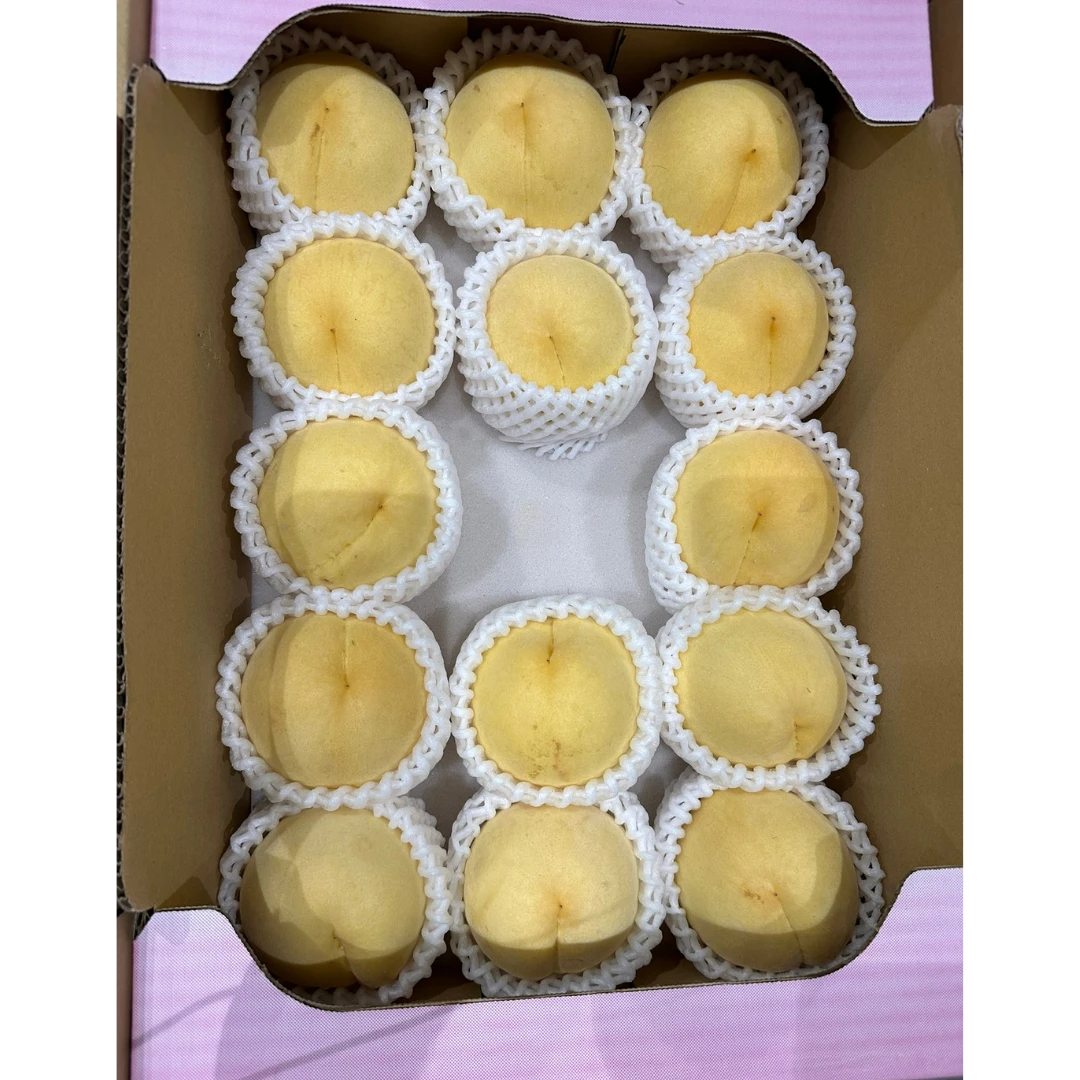NASHI - JAPANESE ASIAN PEARS - Pyrus pyrifolia

Description
なし NASHI - JAPANESE ASIAN PEARS - Pyrus pyrifolia
Types
Popular Varieties
Texture/Flavor Profile
Nashi pears offer a unique combination of crispness and juiciness, delivering a refreshing crunch with every bite. Their flavor is subtly sweet with delicate floral undertones, and they have a low acidity level that sets them apart from other pears. The flesh is firm, almost apple-like, yet tender and juicy, making it a delightful addition to various dishes.
Availability/Seasonality
Nashi pears are typically available from late summer to early winter, with the peak season running from August to October. They thrive in cooler climates, making them a popular choice in regions like Japan and parts of East Asia. However, modern cultivation techniques now allow them to be enjoyed year-round in select markets.
About
The Nashi pear, scientifically known as Pyrus pyrifolia, is deeply rooted in Japanese culture, where it's celebrated for its refreshing qualities. Unlike Western pears, Nashi maintains its shape even when ripe, resembling a round apple. Known for its long history in East Asian cuisine, this fruit has gained popularity worldwide for its exceptional taste and texture.
Preparation
Nashi pears can be enjoyed fresh, sliced into salads, or paired with cheese for an elegant appetizer. Their natural sweetness shines when poached or baked, making them perfect for desserts like tarts or galettes. Chefs also use them in savory dishes, adding a light, crisp contrast to rich flavors. Slice thinly to enhance sashimi platters or incorporate into marinades.
Nutritional Value
Nashi pears are low in calories and packed with dietary fiber, making them a healthy option for digestive health. They contain vitamins C and K, as well as potassium and copper, which contribute to overall wellness. Their high water content also makes them hydrating and a great option for refreshing, guilt-free snacking.
Selection and Storage
Choose Nashi pears with smooth, unblemished skin and a firm feel. A slight aroma at the stem end indicates ripeness. Store them in a cool, dry place for up to a week or refrigerate for extended freshness. For best flavor, allow the pear to reach room temperature before serving, especially if you plan to use it in salads or fresh dishes.
Summary
Nashi pears are a versatile fruit with a crisp texture and mildly sweet flavor, perfect for both savory and sweet culinary applications. Rich in fiber and vitamins, they're a delicious, healthy addition to your menu. Whether served raw, poached, or as an accompaniment to fine cheeses, Nashi pears bring a touch of Japanese tradition to every dish.
Types
- Akanashi: Brown-skinned with a sweet flavor.
- Aonashi: Yellow-green skinned, tart, and refreshing.
Popular Varieties
- Hosui: Sweet, crisp, and golden-skinned.
- Kosui: Sweet with russeted gold/green skin.
- Akizuki: Juicy with a balanced sweetness.
- Nijisseiki: Apple-like texture with a juicy, sugary flavor.
- Shinkansen: Small core, sweet, and crisp flesh.
Texture/Flavor Profile
Nashi pears offer a unique combination of crispness and juiciness, delivering a refreshing crunch with every bite. Their flavor is subtly sweet with delicate floral undertones, and they have a low acidity level that sets them apart from other pears. The flesh is firm, almost apple-like, yet tender and juicy, making it a delightful addition to various dishes.
Availability/Seasonality
Nashi pears are typically available from late summer to early winter, with the peak season running from August to October. They thrive in cooler climates, making them a popular choice in regions like Japan and parts of East Asia. However, modern cultivation techniques now allow them to be enjoyed year-round in select markets.
About
The Nashi pear, scientifically known as Pyrus pyrifolia, is deeply rooted in Japanese culture, where it's celebrated for its refreshing qualities. Unlike Western pears, Nashi maintains its shape even when ripe, resembling a round apple. Known for its long history in East Asian cuisine, this fruit has gained popularity worldwide for its exceptional taste and texture.
Preparation
Nashi pears can be enjoyed fresh, sliced into salads, or paired with cheese for an elegant appetizer. Their natural sweetness shines when poached or baked, making them perfect for desserts like tarts or galettes. Chefs also use them in savory dishes, adding a light, crisp contrast to rich flavors. Slice thinly to enhance sashimi platters or incorporate into marinades.
Nutritional Value
Nashi pears are low in calories and packed with dietary fiber, making them a healthy option for digestive health. They contain vitamins C and K, as well as potassium and copper, which contribute to overall wellness. Their high water content also makes them hydrating and a great option for refreshing, guilt-free snacking.
Selection and Storage
Choose Nashi pears with smooth, unblemished skin and a firm feel. A slight aroma at the stem end indicates ripeness. Store them in a cool, dry place for up to a week or refrigerate for extended freshness. For best flavor, allow the pear to reach room temperature before serving, especially if you plan to use it in salads or fresh dishes.
Summary
Nashi pears are a versatile fruit with a crisp texture and mildly sweet flavor, perfect for both savory and sweet culinary applications. Rich in fiber and vitamins, they're a delicious, healthy addition to your menu. Whether served raw, poached, or as an accompaniment to fine cheeses, Nashi pears bring a touch of Japanese tradition to every dish.

